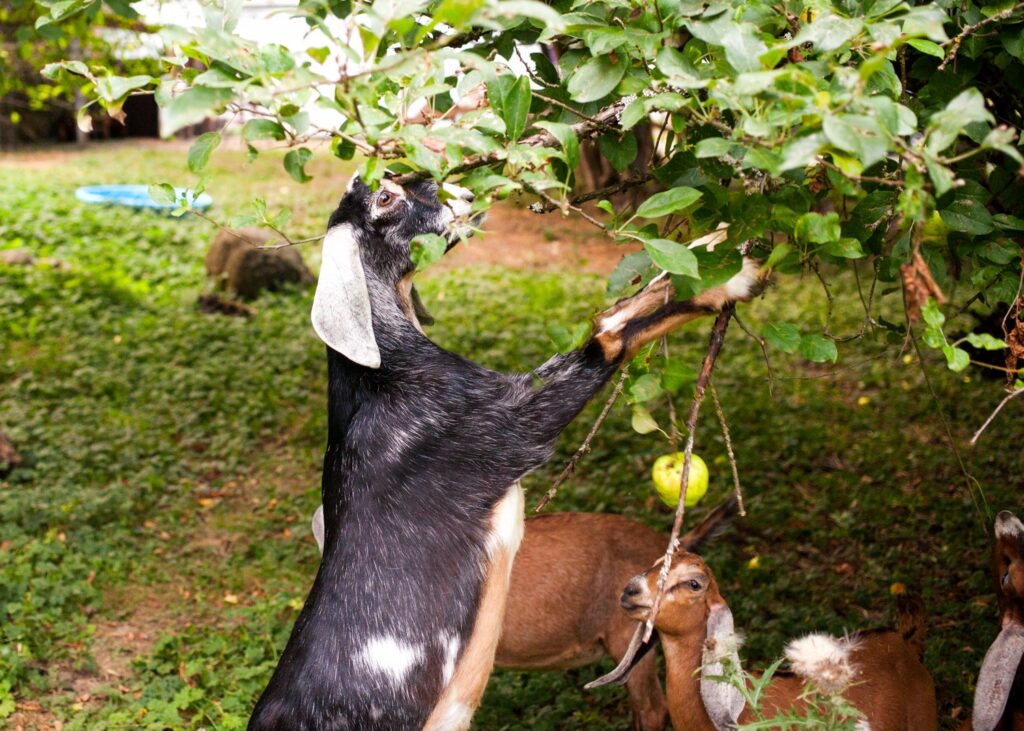Food & Climate
The Happy Goat of Mariposa, California in U.S, now provides the vegetation-clearing creatures to landowners to reduce wildfire risk.
The goats are part of a growing trend of using livestock to mitigate wildfire risks across the West of America, according to a report seen by “Food & Climate” platform.
And Happy Goat is nonprofit, that uses goats reduce wildfire risks. That need is acute in California’s Sierra region, where catastrophic fire presents an unprecedented challenge. More than 880,000 people live in this mountainous stretch of the state, according to the California Wildfire & Forest Resilience Task Force.
Devastating fire
Mariposa County, where 16 percent of the population lives below the poverty line, is still recovering from the particularly devastating Oak Fire, an arson-caused blaze that leveled 127 homes and 66 outbuildings in 2022.
In July, a new threat, the 908-acre French Fire—caused by a lawn mower that ignited dry grass—burned dangerously close to Mariposa’s historic main street and destroyed or damaged 18 structures.
“The use of goats for targeted grazing is becoming more popular statewide as it is consistent with increasing the protection of people, structures, and communities,” says Kara Garrett, coordinator of Cal Fire’s Community Risk Reduction Program.
“Many have found grazing to be an effective tool. Not only do [the goats] help clear annual vegetation, but they also browse up trees and reduce fuel loads, helping property owners with their fuel reduction”, according to “Civil Eats”.
Cal Fire doesn’t hold contracts specifically for grazing, Garrett says, but 18 of the Wildfire Prevention Grants it awarded for 2022-2023 went to projects that included grazing.
“Lawn mowers, weed eaters, chainsaws, tractors, and trimmers can all spark a wildland fire if used during the wrong time of year,” Garrett says. “And with work still left to be done across California, the grazing goats are a safe alternative to help maintain vegetation”.
Nearly a third of all acres treated in fuel-reduction projects by the Bureau of Land Management (BLM) in California utilize grazing, which includes goats, says Sarah Denos, a spokesperson for the BLM in California.
Acres grazed for fire mitigation through the agency more than doubled between 2018 and 2022, Denos says.

BLM data shows a spike from about 5,400 acres in the state to 18,000 acres during that period.
Goats can be used in lieu of herbicides to target invasive plants in a way that helps restore balance to the ecosystem, including by adding nutrients back to the soil through their waste, Denos says.
Additionally, goats can navigate steep, rugged terrain where machines aren’t practical, she adds.
There are drawbacks, of course. A herd of goats, if not properly monitored, can mow through a lot of land, eating up everything.
But if they’re well guided, goats can also be an appropriate tool in locations requiring a “lighter touch,” such as sensitive cultural sites, says Mark Thibideau, a spokesperson for the U.S. Forest Service Pacific Southwest Region.
Beyond general grazing permits, which the Forest Service has issued since its inception, Thibideau says that last year his region used livestock to graze 4,544 acres specifically to mitigate wildfire.
Happy Goat provides help
In rural Mariposa County, where many large, historic ranches have been replaced by smaller residential parcels that can easily get overgrown, Happy Goat provides help.
Goats’ love of leaves means they create extra clearance between the ground and low-hanging branches, which helps prevent fire from jumping into the tree canopy.
Happy Goat’s humans also assist by doing some pruning to ensure that clearance extends to six vertical feet.
Other goat operations in California include those led by the Ojai Valley Fire Safe Council, City Grazing in San Francisco, and numerous Sonoma County grazing cooperatives.
“They’re more sustainable—they have less impact to the environment,” one Southern California Edison worker told The Fresno Bee about using goats from Chasin Goat Grazing for vegetation management beneath power lines in the Sierra.
Happy Goat donates much of its produce to food banks. It gave away 4,400 pounds of produce last year—more than a third of all it grew—and plans to double that number. Beyond goats, other animals on its farm include chickens for eggs, sheep, pigs, ducks, guineafowl, and a goose. None are used for meat.

Funding for Happy Goat’s philanthropic efforts comes from related enterprises, like its for-profit diner, Happy Goat Farm to Table, which opened last fall in the town of Mariposa just down the road. Happy Goat was also awarded a rural development grant from the United States Department of Agriculture last year to research the feasibility of using the goats’ hair for cashmere production, which is limited in the United States.

